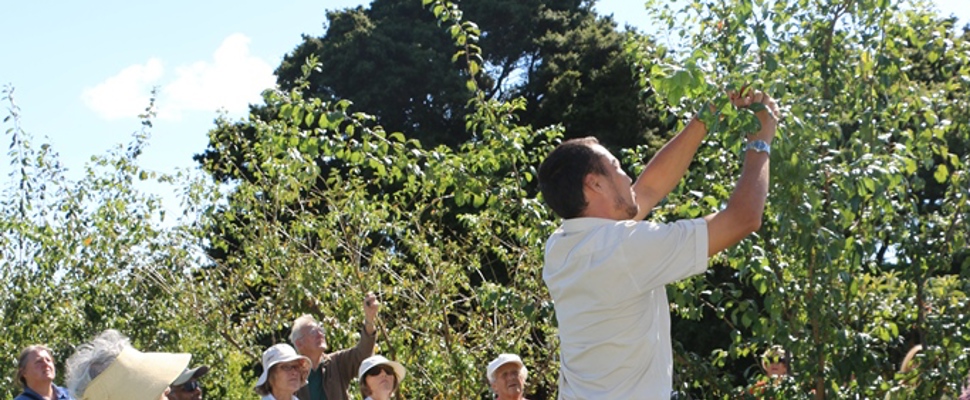
Pruning
Trees and shrubs are usually pruned to maintain an attractive shape, a manageable size, and improve fruit and flower quality. It can also help prevent disease. The general rule is to prune all flowering plants shortly after flowering has finished and fruiting plants once harvest is complete. Frost tender plants are best pruned in spring once the risk of frost is minimal.
Pruning perennials
- Trim young plants to encourage bushy growth. E.g. gaura, penstemons and ageratum.
- Most perennials need little further pruning other than the regular removal of spent flowers.
- Most herbaceous perennials should be cut back hard in winter when dormant.
- Many evergreen perennials such as Gaura can be cut back in winter. However, it is best to wait until spring before pruning plants that are frost tender or prone to root diseases in wet soils, such as lavender, penstemons and artemisia.
Pruning shrubs
- When and how to prune shrubs is mostly determined by their main features. Those grown primarily for their flowers should be pruned immediately after flowering is finished. Shrubs grown for fruit are best pruned once harvest is done.
- Prune frost-tender shrubs after the threat of the last frost has passed (usually after Labour weekend).
- See our video below for step by step instructions on pruning roses.
Pruning trees
- Formative pruning of young trees is vital to ensure they are structurally sound once mature. Remove competing leaders from trees that typically have one main trunk. Any branches that arise from the trunk at an acute angle should be removed as they eventually can break away.
- Remove diseased or damaged branches and any that cross over or rub on others to prevent damage.
- Pruning fruit trees depends on the type of tree it is. See our Fruit tree brochure for more information.
- See our video below for advice on pruning fruit trees.